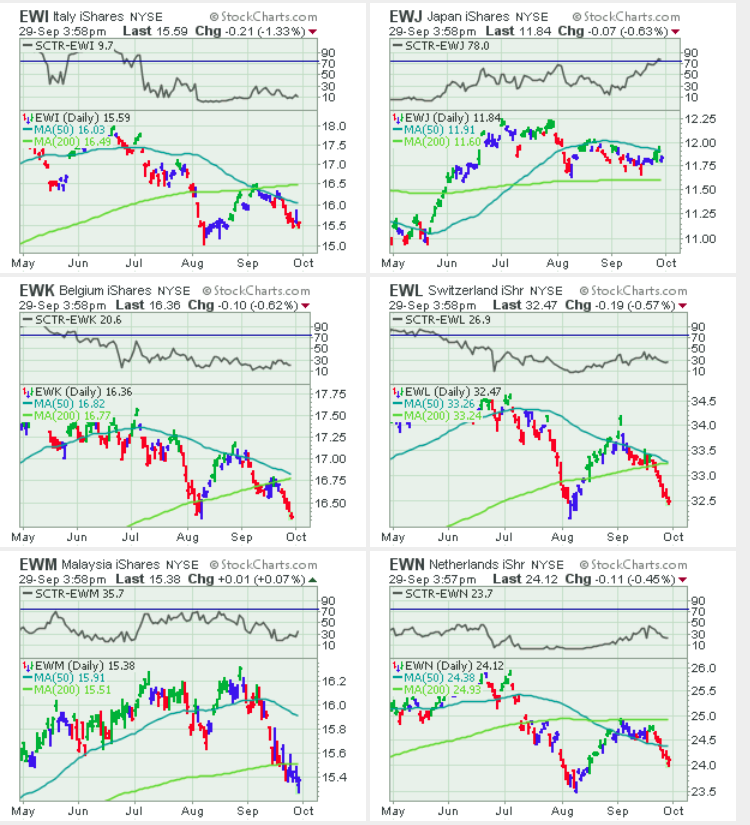Weak Start to September for Natural Gas ETFs Will This Continue ETF News And Commentary
Post on: 16 Апрель, 2015 No Comment

Commodities across the board ranging from oil to agriculture saw choppy trading last week on sluggish demand for natural resources, global supply glut, unfavorable weather conditions and strengthening dollar. Natural gas was the worst performer in the commodity space in the said period.
This is especially true as the ultra-popular United States Natural Gas Fund ( UNG ) eroded 6.7% value last week when compared to losses of 1.6% for the broad commodity fund ( DBC ) and 2.3% for broad energy fund ( DBE ). Further, Teucrium Natural Gas Fund ( NAGS ) and iPath Dow Jones-UBS Natural Gas ETN ( GAZ ) lost more than UNG. Both funds are down nearly 8% (see: all the Energy ETFs here ).
The leveraged natural gas products also saw wild trading as triple long ( UGAZ ) moved lower by 19.2% while the 2x long product ( BOIL ) slumped nearly 12.5%. The massive losses for the natural gas funds stem from the forecast of falling temperatures that will likely cut the need for air conditioning and reduce demand for the natural gas in homes and businesses.
According to NatGasWeather.com, temperatures across the southern and eastern U.S. would be cooler-than-normal for this week, with highs reaching upper 80s and 90s. Further, the third week of September will also see temperatures in the range of 70s and 80s, resulting in lower cooling demand. However, only West is expected to remain warmer than normal. Lower demand will continue to pave way for massive inventory builds, leading to thinning of five-year natural gas shortage.
On the other hand, rising stockpiles continue adding to the global supply glut. As per the latest EIA storage report — a key mover of the natural gas markets — natural gas stockpiles rose 79 billion cubic feet for the week ending August 29 (read: Natural Gas ETFs Tumble as Supply Levels Surge ).
Though the inventory declined 14.8% from the year-ago level and 15.4% from the five-year average, it is above analysts’ expectation of 73 billion cubic feet. Stockpiles are increasing on the boom in shale production and this trend is likely to continue in the short term with more untapped wells coming online.
Moreover, with the end of summer, demand for natural gas generally starts waning as high temperatures recede and people use less fuel. In addition, natural gas inventories accelerate before winter heating demand kicks in during the season of fall.
If this is not enough, investors could easily look into technical charts, which indicate a bearish scenario for the natural gas ETFs at least for the near term. Let’s dig into this in greater detail below:
Technical Look
In the chart below, we have considered UNG, which provides direct exposure to the spot price of natural gas on a daily basis through future contracts. The fund has lost all its gains made early in the year and is currently up just 0.3% year to date (read: Can a Heat Wave Turn Around the Natural Gas ETF? ).
Its short-term moving averages failed to stay above long-term levels. This is because the 9-Day EMA is far below the longer-term 200-Day EMA, suggesting some more pullback for this ETF. This is further confirmed by a Parabolic SAR, which is currently signaling a bearish trend, although this figure should definitely be monitored closely.

Additionally, the fund has a RSI close to 40, suggesting that UNG is slowly approaching the oversold territory. However, the fund is expected to rebound once it reaches this level or bottoms out.
What is in Store?
Investors could see more supplies being added in the coming weeks to the vast natural gas stockpiles thanks to new fracking technologies. This, coupled with the forecast for mild weather, could hurt the natural gas ETFs further, extending the brutal trading into September (read: Is It Finally Time to Buy the Natural Gas Equity ETF? ).
However, as temperatures fall further, the need for natural gas will likely increase due to higher heating demand. Investors should note that November-March is generally the peak demand period for gas consumption in the U.S. This, along with the current bearish near-term sentiments, may keep investors on the sidelines until they can spot an attractive entry point.
Want the latest recommendations from Zacks Investment Research? Today, you can download 7 Best Stocks for the Next 30 Days. Click to get this free report >>
Want the latest recommendations from Zacks Investment Research? Today, you can download 7 Best Stocks for the Next 30 Days. Click to get this free report














